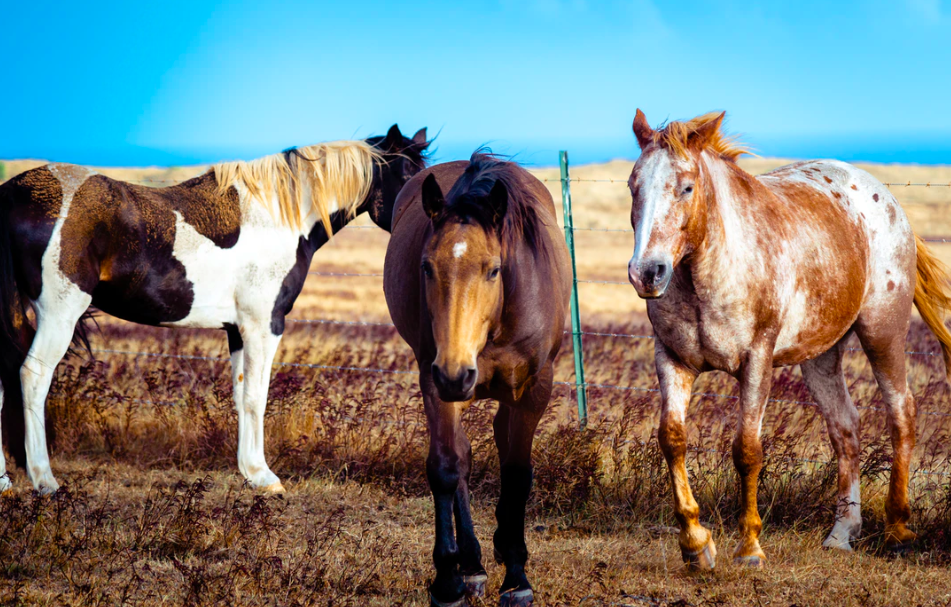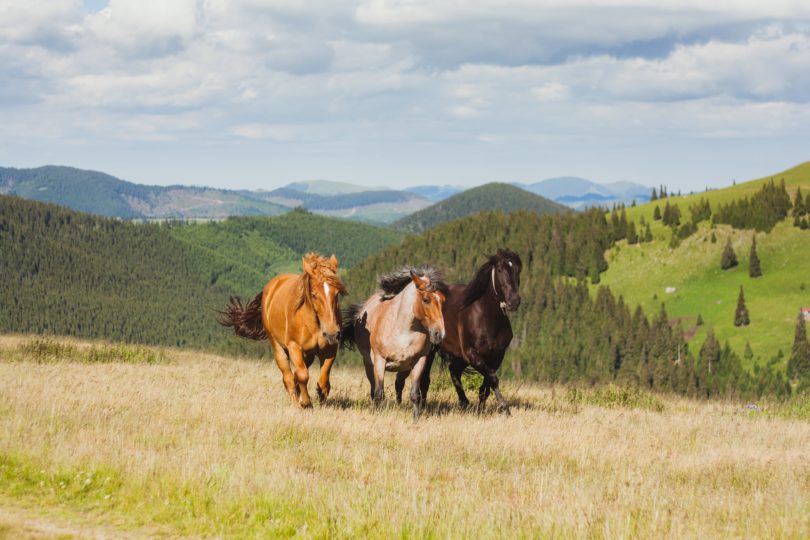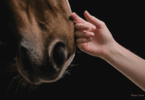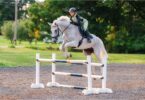Catch Me, Now You Can: Easy Clicker Training Plan
In my article about 6 easy clicker training exercises for horses, you learned about positive reinforcement (e.g. clicker) training for horses. Now that you know how to reinforce desired behaviors with something he values, it’s time to use your clicker training skills to reinforce desired behaviors with something you value: a horse that responds to his name.
Catching a horse in the pasture is a struggle for many people, but not for clicker trainers. Even if you’ve only taught one or two exercises with the use of clicker training, your horse will start engaging with you in a new way. You’ll have the foundation to teach him to come running to the gate as soon as he sees you.
The secret to your success? Give the learner, your horse, something he truly desires. It’s always the learner who determines if something is rewarding to him, not the trainer.
This is what you have to pay attention to in your training: does the desired behaviour increase? If so, it was reinforced by the reward. If the behaviour didn’t change or if it decreased, you need a better reward. It’s that simple.
Just getting started with clicker training? Check out 6 Easy Clicker Training Exercises for Horses (With Pictures) to learn the basics.
How do you teach your horse to come when called?
As with any training, it’s important to be methodical and patient. Below, you’ll learn about the tools you’ll need, the purpose of teaching this behavior, and how to do it step by step.
What you’ll need:
- Clicker
- Treats
- Puzzle mat (these foam puzzle mat pieces at Amazon work great)
- Enclosed environment like a paddock or small arena
Why teach it:
The better question might be, why not teach it?! It’s fun to have a horse that responds to his name, but it’s also useful.
Instead of trudging out to the back of the pasture, simply call your horse’s name and watch him come running.
If your horse ever escapes from his enclosure, whether at home or away, he will come to you when you call his name.
Icing on the cake? People will be quite impressed when your horse responds to his name!

Imagine how nice it’d be to stop catching your horse and have him come to you instead!
How to do it:
- Teach your horse the 6 Key Lessons (your key to success) of clicker training.
- Make sure your horse knows how to stand on a mat and click/treat as a reward. This can take several training sessions, so keep sessions short (~20 treats).
- Use a cue your horse already understands: “Whoa” and walk one step away from your horse. Click for ‘staying on the mat,’ and give your horse a treat. Once your horse understands that staying on the mat gets him treats even when you walk away or around him, he will quickly learn to stay on the mat.
- Confirm that your horse knows the Key Lesson Targeting. If your horse can’t target, it will be a bit more challenging. Take a few sessions to teach targeting.
- Now that your horse can stand on a mat and he can target, you’re ready to make it a bit more challenging. Ask your horse to step onto the mat, ask him to wait with your “whoa” command, and click/treat.
- Walk one step away and present the target. If you’re 99% sure your horse will take a step towards the target and step off the mat, then you’re ready to add a cue — in this case, his name!
- Click the moment he moves towards the target. It’s the movement that you want to reinforce, not touching the target.
- Now it’s time to fade out your props. Start with fading out the target and just call his name. Click and treat for responding to his name. If your horse doesn’t understand what to do, make the same movement with your arm as you did when presenting the target, it helps your horse to understand. Click and treat for coming over.
- The next step is to fade out the mat. Ask your horse to stand still with your verbal cue. Click and treat for staying. Repeat step 3 without the mat. If your horse knows how to stand still while you walk away, you’re ready for the next phase in training — add calling his name.
- Congratulations! You’ve taught your horse to respond to his name by coming to you.
- Once your horse can consistently do this in a closed environment, you can start practicing in other environments like the pasture.
- Repeat step 1-8. It can help your horse to use the target if you start practicing this in the pasture. By now, the target is so often reinforced with a click and treat it becomes a ‘horse magnet.’
How to Learn More
If you want to know more about clicker training, or this exercise in particular, book your free discovery session here. Learn how clicker training can help you get training results and improve your horse relationship and communication. Or, send an email to info@clickertraining.ca if you’d like to see my “How To” video tutorial.
About Sandra Poppema
Sandra Poppema, BSc, started her career as a riding instructor 30+ years ago. She noticed many riders needed to improve their communication skills. She became a horse trainer and began teaching equestrians how they could improve their relationships with their horses through intentional training and riding. Sandra became the go-to person for online positive reinforcement training after taming and training a wild horse with her innovative HippoLogic Key Lessons. She created this home-study program so horse people around the world can become autonomous equine clicker trainers.
Learn more on the HippoLogic Horse Training website, and request your free 5-Step Clicker Training Plan!
P.S. Enjoy this article? Trot on over to:
- 6 Easy Clicker Training Exercises for Horses (With Pictures)
- Teach a Horse to Stop Grazing While Leading (Step by Step)
- Teach Your Horse to Lie Down on Cue (Step by Step)
- Friendly & Fun: 4 Best Horse Breeds for Beginners
- Keep Calm & Ride On: Meet the 3 Calmest Horse Breeds
- 3 Riders on Equestrian Bullying (And What to Do About It)
- 32 Things You Can Do Now to Calm Your Riding Nerves Forever
- How Horses Sleep: A to Zzzz Guide to Equine Rest







